At the end of the war a Labour government came into power in Britain that was sympathetic to Indian Independence. New elections were held, and although Congress did well, the Muslim League took all the reserved Muslim seats. A trial of the captured Indian National Army officers, who had fought alongside Japan in the war, made them heroes and they received suspended sentences. Further anti-British sentiment was expressed in mutinies carried out by the Indian Navy and Air Force.
In 1946 more talks to devise a constitution ended in stalemate. Jinnah felt the Muslims were being marginalised by the British and Congress. He decided to abandon constitutional methods and resort to direct action. Muslim demonstrations in Kolkata degenerated into attacks on Hindus, and the Hindus retaliated. In three days 5,000 died, and the violence spread to other cities. The viceroy asked the Congress leader, Jawaharlal Nehru, to form an interim government. Nehru was born to a wealthy family in Allahabad and, after graduating from Cambridge University he qualified as a barrister and rose to be president of Congress. Despite being a protégé of Gandhi, he was an atheist, and a pragmatic, capable administrator.
The new state of Pakistan
In February 1947 the British government announced that it would hand over power no later than June 1948. Lord Mountbatten, a man of great charm who was related to the British royal family, became Viceroy of India.
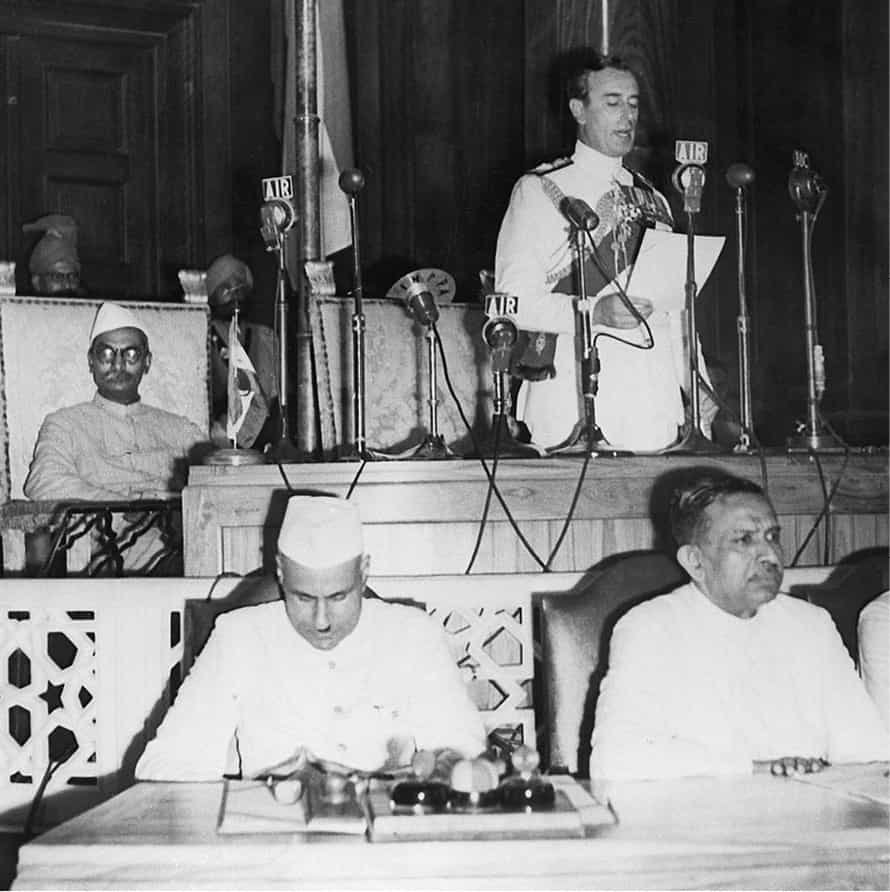
Lord Mountbatten announces Independence.
Corbis
Mountbatten formed a close friendship with Nehru, but did not see eye to eye with Jinnah. The date of Independence was brought forward, and the end of empire was accelerated with disastrous consequences. On 15 July 1947 it was announced that one month later Partition would create two independent countries, India and Pakistan. There was a frantic scramble to divide up all of the government’s assets in proportion to the populations of the new countries – 82.5 percent to India, 17.5 percent to Pakistan. It was already clear that Pakistan would be itself divided into two provinces, West Pakistan and East Pakistan, separated by a thousand miles of Indian territory.
A British lawyer, Sir Cyril Radcliffe, who had never been to India, was charged with dividing the country – those areas with a Hindu majority to India, those with a Muslim majority to Pakistan. On the borders of these zones there was terrible bloodshed as those of the majority religion tried to remove any possible ambiguity. Following Independence, a massive migration across the new border – of Muslims to Pakistan, Hindus and Sikhs to India created terrible violence on both sides, resulting in many deaths, estimated to be at least half a million, if not a million. At least 10 million people changed countries.
Independent India
At midnight on 14 August 1947, Jawaharlal Nehru, India’s first prime minister, had proclaimed independence. One of the first tasks for the new government was to force accession on a number of undecided Princely States. Most acceded peacefully. Hyderabad and Junagadh had Muslim rulers, but their populations were mostly Hindu. Both were eventually taken over by force. Kashmir was a largely Muslim state ruled by a Hindu. Hoping that he might retain an independent status, the maharaja prevaricated. Some Muslim peasants revolted against their Hindu landlords, and Muslims from Pakistan crossed into Kashmir to give them help. The maharaja then acceded to India and asked for assistance. Mountbatten stipulated that once order was re-established there should be a plebiscite to establish what the people of Kashmir wanted. Fighting continued until Kashmir was split in two. A ceasefire in 1949 left Kashmir divided, as it still is.
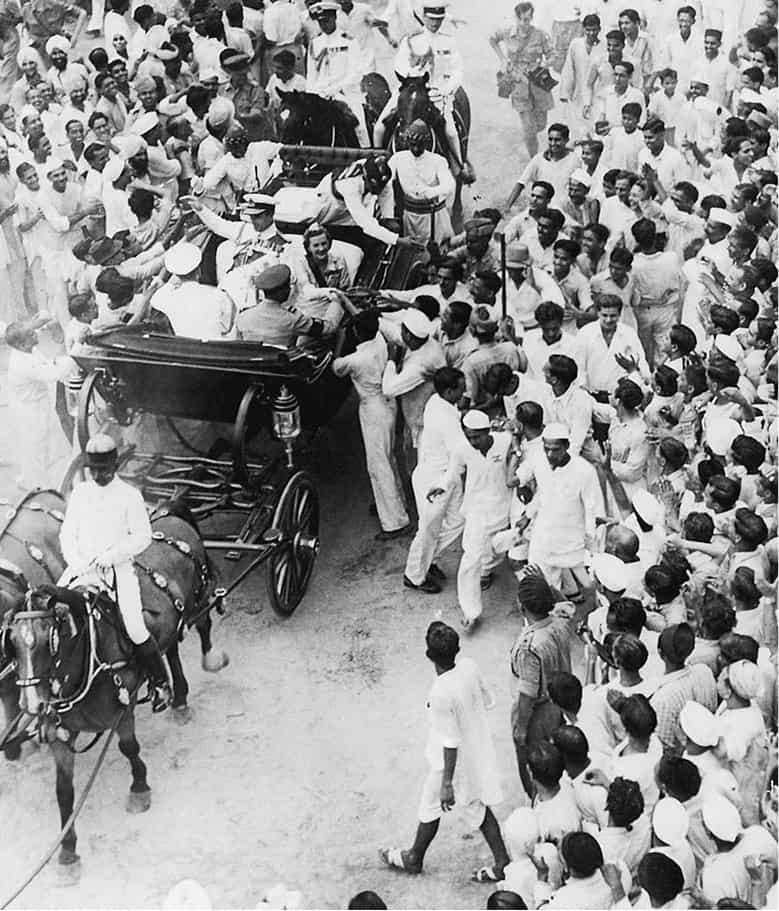
The Mountbattens on their way to the Constituent Assembly, August 1947.
Corbis
Gandhi assassinated
Gandhi was appalled by the Hindu attacks on Muslims and the callous treatment by Congress of the refugees. To force a change of policy, he went on hunger strike. Hindu nationalists opposed Gandhi for his liberal views, and as Gandhi walked to his prayer platform, one of them opened fire and killed him. The shock brought the nation to its senses. Nehru was able to act against the extremists and impose order.
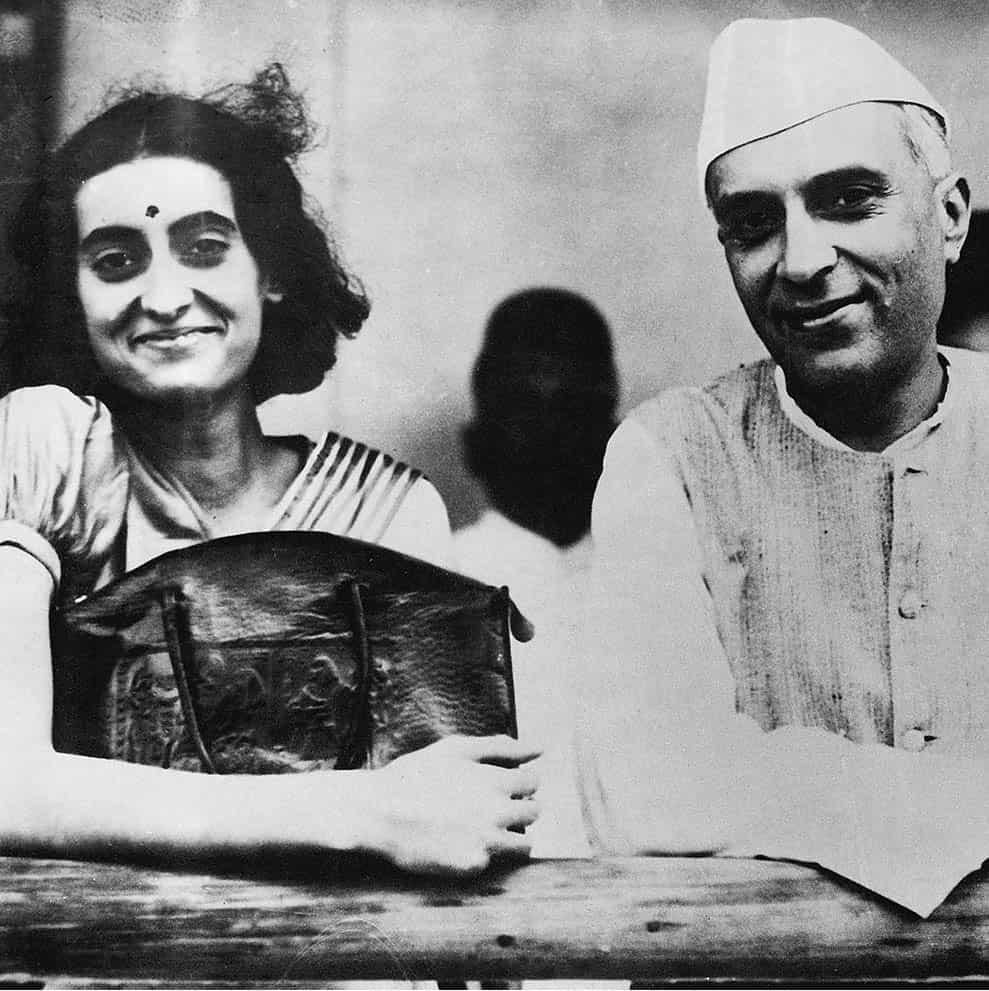
Indira Gandhi and her father, Nehru.
Corbis
The new constitution
India became a republic on 26 January 1950, with a new constitution that stressed the secular nature of India and the equality of all its citizens. Although untouchability had been outlawed in the constitution, the position of the Dalit community was, after many centuries of discrimination, still notably inferior.
Penalties were introduced to stop oppression, and a quota was established to give the Dalits representation in the legislatures and government service. Measures were also introduced to emancipate women. Child marriage was banned and Hindu women received the right to initiate divorce proceedings and to have the same inheritance rights as men.
The new India was broadly Socialist during Nehru’s many years as prime minister. The economy was directed from the centre through a series of five-year plans. Nehru managed to negotiate a non-aligned foreign policy, which enabled India to profit from the Cold War rivalry; both Western and Russian finance and technical assistance enabled India to industrialise. Major facilities were installed to manufacture steel, fertilisers and cement, and to build the power stations India needed. The increases in food production, however, were largely offset by large increases in the population. Although malnutrition was (and still is) common, there were none of the famines of the British period or its predecessors.
Jawaharlal Nehru died, while still prime minister, in 1964. Millions attended his funeral and mourned the loss of probably the most powerful and most loved ruler India had ever had. After his death there was a more collective rule by Congress, but this new leadership was almost immediately challenged by Pakistan.
Un-neighbourly relations
The civilian government in Pakistan had been toppled in a military coup in 1958, and General Ayyub Khan had become president. America saw him as a bulwark against Communism and gave Pakistan much military hardware. Pakistan had tried to reopen negotiations on Kashmir with India, but India had insisted that Pakistan vacate Kashmir first. Ill feeling between the two countries was exacerbated by Pakistan allying itself with China after India’s defeat in the Indo-Chinese War.
Following Pakistan’s foray into Gujarat in early 1965, a ceasefire brokered by the UN forced Pakistan’s withdrawal. When Pakistani-trained guerrillas crossed into Indian Kashmir, India sent its troops across the demarcation line and so did Pakistan. The Indians, who had been receiving help from America since the war with China, were stronger, and their army almost reached Lahore. The Soviets arranged a summit meeting and a ceasefire, and both countries withdrew their armies.
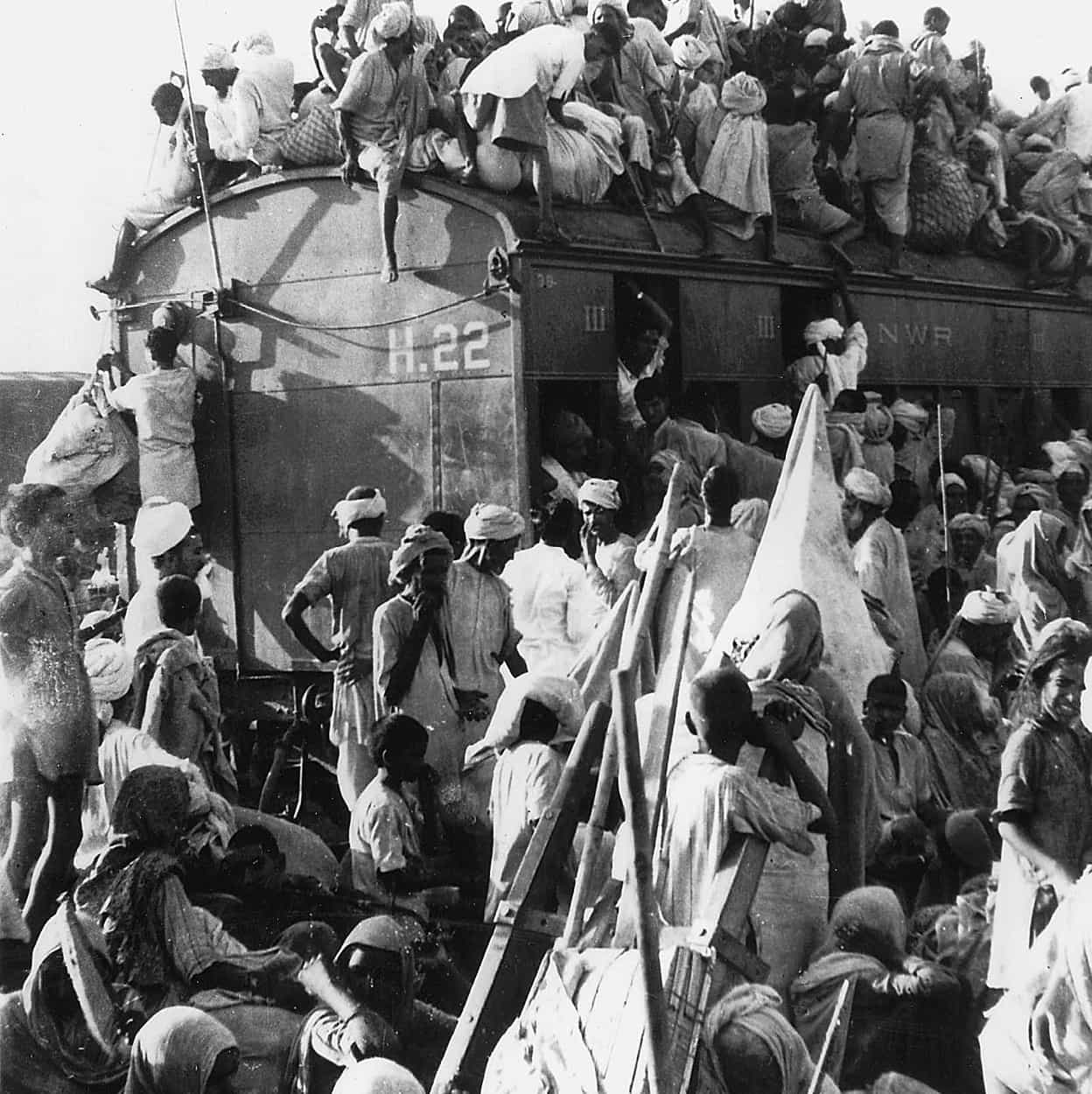
Muslim refugees cram onto a train bound for Pakistan from New Delhi in 1947 following Partition.
PA Photos
Indira Gandhi
Nehru’s daughter, Indira Gandhi (not related to Mahatma Gandhi), was a close companion and confidante of her father. She travelled widely with him, and her international connections were to prove useful later in her political career. After his death, she became Minister for Information and Broadcasting, which would prove to be beneficial experience. When she became prime minister in 1966, the monsoon had failed and the country was facing starvation. She flew to Washington and was able to secure from a sympathetic American government millions of tons of wheat and financial assistance.
Mrs Gandhi devalued the rupee to help exports. This, however, was interpreted as a manifestation of Congress’s economic mismanagement. Faced with militant demands by Sikhs for a separate state, she split the old Punjab into a smaller Sikh-dominated Punjab and a Hindi-speaking Haryana. Many saw this as weakness and to add to these difficulties, there were strikes and food riots.
Indira Gandhi fought the old guard of the party to move to increasingly socialist policies. She nationalised the banks and started the redistribution of agricultural land. She took away the privileges of the former rulers of the Princely States. In the election of 1971, with the slogan ‘Eliminate Poverty’, she won a sweeping victory.
India opposed American policy in Vietnam. The Americans resumed arms shipments to Pakistan and backed the new military ruler, Yahya Khan. India had refused to sign the Treaty on Nuclear Non-Proliferation and was producing plutonium. Meanwhile, the relationship between West and East Pakistan was deteriorating. The Bengali-speaking East was ruled by the army and bureaucrats of the Urdu-speaking West. A clampdown on politicians and dissent in the East was supported by the Americans. In March 1971, the people in the East took to the streets to demand freedom. The West Pakistan army then killed thousands of East Pakistanis as it restored control. By the end of the year 10 million refugees had fled to India.
Creation of Bangladesh
Hostilities between India and Pakistan began in December 1971. To counteract pressure from the Americans, who supported West Pakistan, India entered into a mutual defence treaty with the Soviet Union. India trained East Pakistani guerrillas to return to their country and disrupt government. India then invaded. The Pakistan air force attacked Indian airfields, after which India attacked West Pakistan as well as East Pakistan. Within a few days the Indians crushed the Pakistan army in the East and forced their surrender. East Pakistan then became independent Bangladesh. The new, smaller Pakistan was no longer a serious threat to India.
New challenges for Mrs Gandhi
The centralised economy was hugely bureaucratic and corrupt. Rampant inflation, which destroyed people’s savings, also fuelled discontent. In Bihar, J.P. Narayan led a coalition against the government; in Gujarat, Morarji Desai led the attack on the corrupt state government of Congress. Mrs Gandhi was dealt a severe blow when the High Court ruled that she had been guilty of electoral malpractice. Next day it was announced that Morarji Desai had defeated Congress in the Gujarat elections. He and J.P. Narayan joined forces to urge anti-government protests and disobedience. Mrs Gandhi then declared a state of emergency. Desai, Narayan and many thousands of politicians, student activists, lawyers and journalists were arrested and jailed.
Mrs Gandhi initiated a drive against corruption and inefficiency. A good monsoon helped bring down the price of food. The banning of strikes raised industrial production. Business leaders were sympathetic to the authoritarian regime and boosted investment. In 1977 Mrs Gandhi felt confident enough to release her opponents and call an election. But Morarji Desai and J.P. Narayan revived their Janata Party and won a resounding victory. Desai became prime minister.
The Janata government was plagued with dissent and was ineffectual. Inflation rose again. Indira Gandhi fought a by-election and won. In January 1980, Mrs Gandhi became prime minister again, with a large majority.
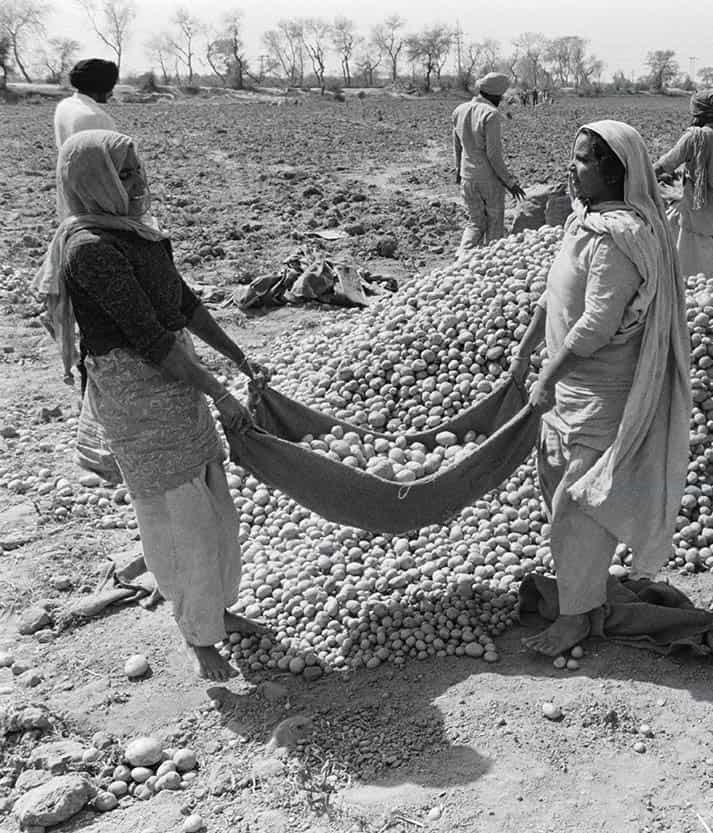
Harvest, Punjab, 1970. India benefited from the so-called “Green Revolution”, bringing high-yield crops.
Corbis
Problems in Punjab
Indira Gandhi’s administration was plagued by separatist insurrections. In the northeast seven tribally dominated states were engaged in violent protests against an influx of Bengalis. After many of the migrants were killed, Mrs Gandhi imposed martial law. The biggest threat to the central government, however, came from the Punjab, India’s most affluent state. Jarnail Singh Bhindranwale, a fundamentalist who wanted a Sikh nation, became the Punjab’s leader. In 1984, he and his armed followers took over the tower of the Golden Temple at Amritsar and resolved to stay until the state was given autonomy. Mrs Gandhi ordered in the army. In a two-day battle, Bhindranwale and thousands of Sikhs were killed. The Sikhs’ holiest temple was badly damaged. Eighteen months later two of Indira Gandhi’s Sikh bodyguards gunned her down. As news of Mrs Gandhi’s death spread, Hindus took to the streets of Delhi, and thousands of Sikhs were killed.
Gandhi’s successor
Mrs Gandhi had groomed her son, Sanjay, to follow her, but he had died four years earlier. The other son, Rajiv, had originally chosen to avoid politics, but he became politically active on his brother’s demise. He was only 40 when he became prime minister. He called an immediate election, which he won by a huge majority. Rajiv Gandhi was a champion of new technology and modern management. He moved away from the Socialist policies of his mother, removing many of the restrictions on business and relaxing the controls on imports. Rajiv Gandhi also became involved in the efforts to stabilise the conflict in Sri Lanka.
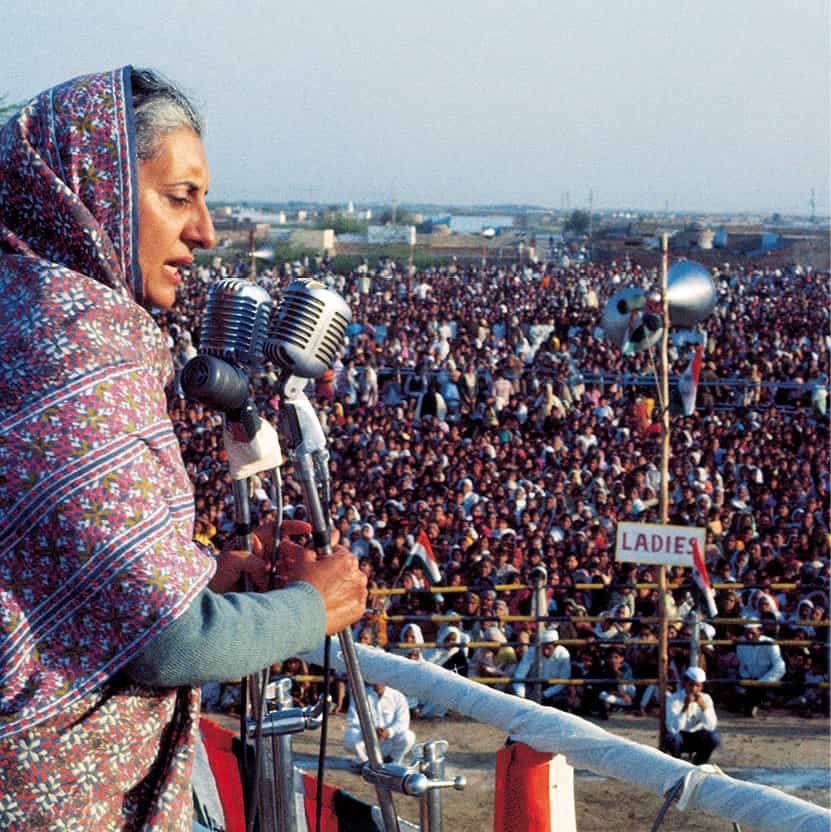
Indira Gandhi, during her election campaign in 1971.
Corbis
Rajiv Gandhi came in on a promise to curb corruption. This was taken seriously by his Finance Minister, V.P. Singh, who was moved to defence when he began to probe too deeply. Singh uncovered signs of corruption at the highest level of Congress in the award of a massive contract to the Swedish company Bofors. He resigned to form the National Front party.
The election of 1989 brought the National Front to power in a coalition with a small majority, with V.P. Singh as prime minister. This administration had a short but important tenure. Singh went to the Golden Temple and apologised for the attack in 1984, which led to an easing of the confrontation with the Sikhs, and also withdrew the peacekeeping force in Sri Lanka. In Kashmir, however, heavy-handed interventions escalated the conflict. Singh also introduced legislation to reserve a proportion of government jobs for the lower-caste Hindus who had been historically disadvantaged, and this had a considerable long-term effect on social mobility.
Rajiv Gandhi was assassinated by a Tamil woman suicide bomber in 1991. Elections then brought Congress back to power under Prime Minister P.V. Narasimha Rao. The Indian stock exchange was opened to foreigners and foreign capital poured in; industrial production and exports grew rapidly, although the benefits did not percolate down to the poor. Meanwhile, Rao’s government was perceived to be engaged in widespread corruption.
State of the parties
The political kaleidoscope of India is forever changing, creating unlikely patterns and alliances. Parties include the Congress (Indira, or INC), which still plays on the Nehru legacy and frequently has Nehru’s ancestors in its upper echelons; the Bharatiya Janata Party (BJP), Hindu nationalists; the Left Front, a coalition of parties, including the Communist Party of India and the Communist Party of India (Marxist); and the Samajwadi Party, representing the low castes and Muslims. Regional parties include the Sikh activists, Akali Dal; two Dravidian parties in Tamil Nadu, the AIADMK and their rivals, the DMK; the Telugu Desam Party active in Andhra Pradesh and Telangana; and the Hindu and Maratha extremist Shiv Sena, based in Mumbai.
Ayodhya and the rise of the BJP
In 1992 a group of Hindu zealots destroyed a 16th-century mosque at Ayodhya, which they claimed had been built on the site of an important Hindu temple. Riots and curfews spread across India. Next year a series of bombs were set off in Mumbai that killed 250 people. This attack was widely seen as a reprisal for Ayodhya. Reprisals were, in turn, made against Muslims.
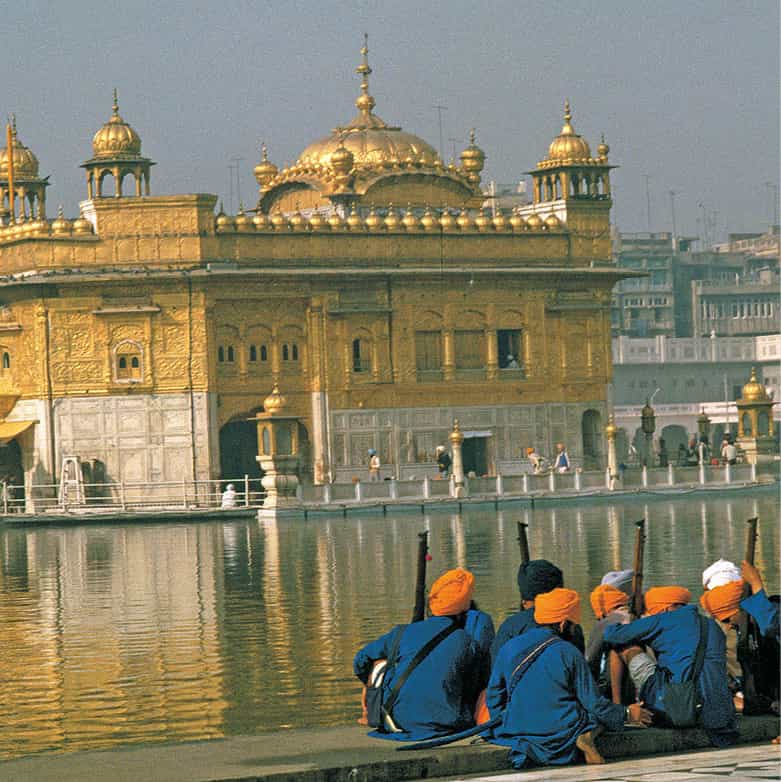
The Golden Temple siege, 1984.
Corbis
The BJP (Bharatiya Janata Party), was able to take advantage of the sectarian unrest. Founded in 1980, the party was the political arm of a group of Hindu right-wing organisations that championed the idea of Hindutva, a Hindu homeland. In the 1996 elections, no party had an overall majority, but the BJP secured the most seats. The BJP leader Atal Bihari Vajpayee put together a coalition, but it lasted barely two weeks, and was replaced by a Socialist-led coalition under H.D. Deve Gowda and, later, Inder Kumar Gujural. Gujural was able and honest, but the warring factions in his coalition made decisive government impossible.
In 1998 the BJP did well in the elections and Vajpayee became prime minister again. The opening up of the economy to foreign companies proceeded apace, but the BJP’s rather extreme form of Hindu nationalism meant that national scientific and cultural institutions were purged of those who did not follow the Hindutva line, and school textbooks were rewritten to promote their interpretation of history. Meanwhile, violence against Hindus led to anti-Muslim riots across Gujarat. About 2,000 Muslims were killed and 150,000 fled to refugee camps.
Relations with Pakistan were growing more strained. After the Indian government authorised nuclear tests in the Thar Desert, Pakistan detonated its own bomb. Pakistan had managed to infiltrate remote areas of Kashmir for several months before India noticed, and it required the loss of 1,000 Indian soldiers to eject them. In 2001 an attack by terrorists on the Indian parliament, thought to have been backed by Pakistan, brought the two countries close to nuclear war.
The return of Congress
The press assumed that the election of 2004 would return the BJP to power. The party campaigned on the slogan ‘India Shining’. It was true that the upper segments of society had never had it so good, but the poor had seen very little improvement in their lives, and voted accordingly. A Congress-led alliance won power. The leader of the Congress was the widow of Rajiv Gandhi, Sonia Gandhi. Italian-born and Catholic, she would have been unacceptable to many. She therefore decided to exercise her influence from behind the scenes and nominated the ex-Finance Minister, Manmohan Singh, to lead the country – India’s first Sikh prime minister. There was a swift improvement in relations with Pakistan.
The economy continued to grow strongly. By 2007 India had the fourth-largest number of dollar billionaires in the world, although the global economic slowdown of 2007–10, while affecting India less than other countries, took its toll, with GDP down 1 percent at the lowest point. The economy has since recovered and is predicted to maintain its meteoric growth rate of between 7 and 8 percent for some time (7.3 percent in 2018); in 2019 it was ranked as the 6th-biggest economy in the world. Crucially, and almost uniquely in Asia, this growth is largely fuelled by domestic consumption, whereas Japan, China and the ‘Asian tigers’ have all largely relied on export-based growth. India is expected to overtake China as the world’s most populous country within a decade.
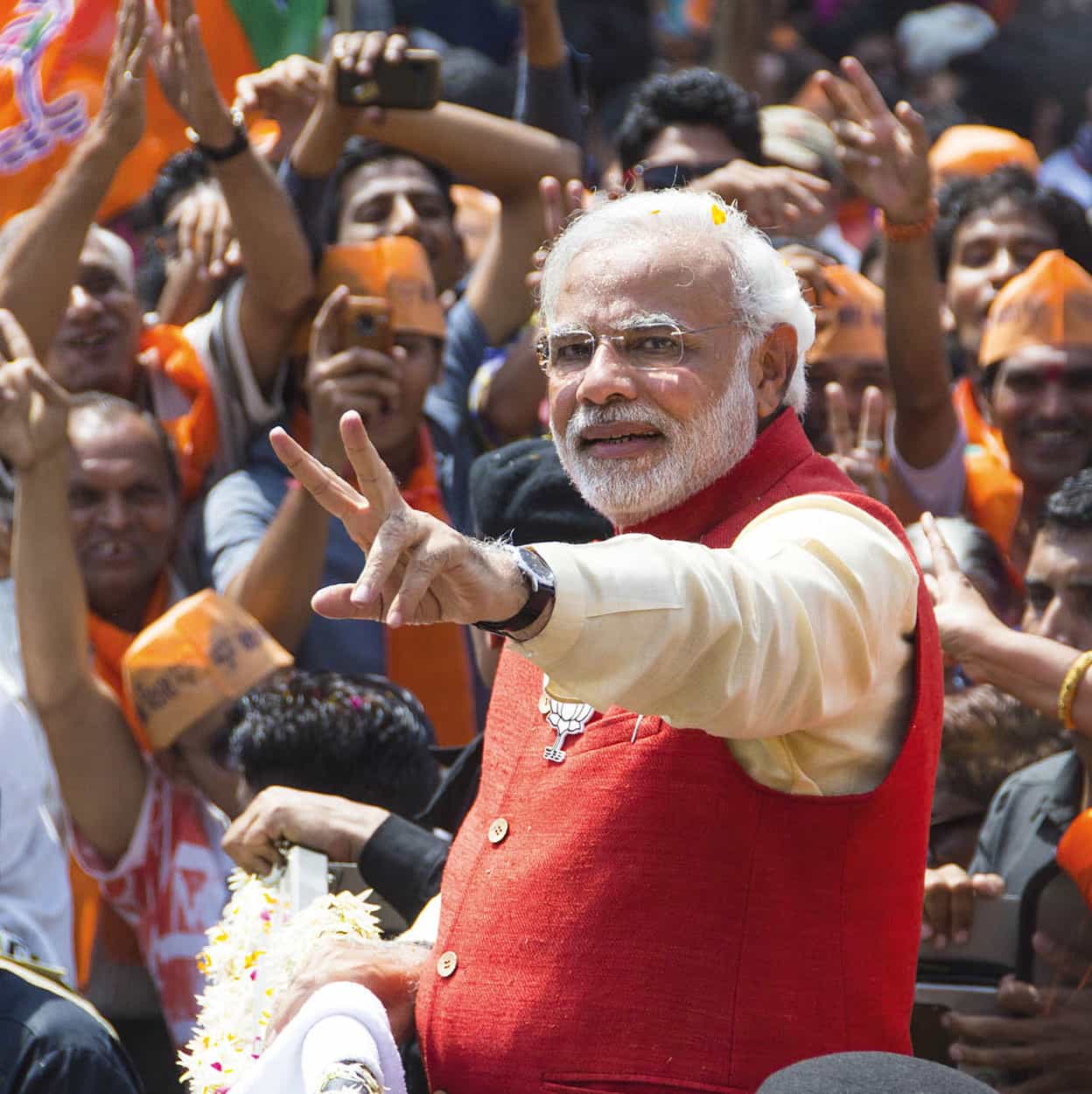
Narendra Modi, the 15th and current Prime Minister of India, was re-elected in May 2019.
Shutterstock
The Left parties in the ruling coalition were able to modify the neo-liberal economic policies of Congress, and allocate more money for the poor, although economic inequality remained a major cause for concern. In 2008, around 300 million of the population of 1.3 billion was living in abject poverty, although this represents a decline in percentage terms. The figure has remained around 25 percent since then. In truth, as the largely urban middle class continues to expand, the rural poor are being left ever further behind. A champion of this cause is Rahul Gandhi, son of Congress premier Sonia Gandhi and a scion of this famous political family.
Terrorist attacks
The relative calm that had prevailed since the attacks on the parliament building in Delhi was shattered at the end of 2008 when a series of bombings by Islamist militants took place across northern India, including several at Delhi markets.
This new wave of violence was to break even more dramatically into the news across the world when a group of ten Islamic suicide attackers arrived by hijacked trawler in Mumbai and started randomly shooting people in the streets, railway stations and hospitals. Two luxury hotels, including the famous Taj Mahal Palace, were besieged and set on fire. ‘Black Cat’ commandos eventually liberated the buildings and killed the Islamists, but not before the eventual death toll had reached 173.
Meanwhile, in the wake of 104 civilian deaths in a period of two months in Kashmir, concerted attempts were made to calm a population on the brink of full-scale uprising. The much-loathed shoot-to-kill powers granted the Indian army were repealed, and for a while the political situation was calmer.
At the time of writing in early 2019, however, the British Foreign and Commonwealth Office (FCO) was still advising against any travel to Manipur state, and Jammu and Kashmir (with the exception of travel to and within the city of Jammu or the Ladakh province), where terrorist incidents have become more frequent. This goes with warnings against travel to the immediate vicinity of the border with Pakistan.
The problem of corruption
In 2010, Delhi hosted the Commonwealth Games – an event marred by the failure of the Indian government to complete the sporting facilities on schedule. The red faces got even redder when it emerged the reason for the debacle was that an estimated $4billion of public money had been embezzled during the run up to the games.
The following year, a 74-year-old anti-corruption activist named Ana Hazare became a rallying point for the nation’s fury when he staged a series of hunger strikes in New Delhi to protest at the abuses of power perpetrated by India’s elected representatives.
In 2012, the anti-corruption lobby was momentarily upstaged by a march involving hundreds of thousands of landless poor aimed at drawing attention to rural poverty. A report published shortly after highlighted the scale of the problem: despite boasting 5–9 percent growth in annual GDP, an estimated 40 percent of Indian children suffer from malnutrition. The country may be on the rise economically, but it holds a gradually increasing number of the world’s poor.
Attitudes to women
Another source of concern in modern India is the generally poor status of women, and in particular the country’s poor record with sexual crime – a fact highlighted internationally in December 2012 when a young medical student was gang raped on a night bus in Delhi. She subsequently died of injuries sustained in the attack, which prompted an international outcry against the lack of seriousness and vigour with which rape cases are prosecuted by the Indian police. Mass demonstrations were organized in the capital as the country once again found itself in the international spotlight – for all the wrong reasons. Despite that, incidences of rape, especially of Dalit women, are depressingly frequent, while convictions occur in roughly only one in four cases.
In the last few years, there have been several further reports of horrific gang rapes on both foreign nationals and locals, whose numbers have included children, nuns and elderly women. The government, aware of the damage the international spotlight on these cases is doing to India’s profile, has sought to impose harsher punishments on rapists. Crucially, there is a realisation that more emphasis needs to be placed on changing the cultural mindset about women. For more information, click here.
Caste struggles
In February 2016, large-scale violence erupted as members of the Jat caste, a traditionally agricultural community who are considered high-caste, demanded the lowering of their caste status in Haryana, in order to access the quotas of government jobs and educational opportunities reserved for members of ‘backward’, or lower castes. This inversion of the usual attitude to caste status emerged as the politically-influential Jats, who are mainly based in northern India states such as Haryana, have struggled with a drying up of private sector jobs and reduction in farming incomes. Protests across India, mainly in Haryana and Delhi, grew violent, disrupting transport and the water supply system, among other services, while 16 people have been reported dead and over 150 injured in clashes with the police.
However, the caste system continues to dominate all aspects of life in India, with the rigid stratifications visible in all quarters of the country. When the caste system is combined with the religious differences, it makes the country all the more remarkable for its continued growth and general stability.